In the early hours of September 28th, 1994, the passenger ferry MS Estonia sank in the freezing waters of the Baltic Sea. This tragedy claimed the lives of 852 people, making it one of Europe’s deadliest maritime disasters.
An official investigation later concluded that the sinking was caused by the failure of the bow visor and car ramp.
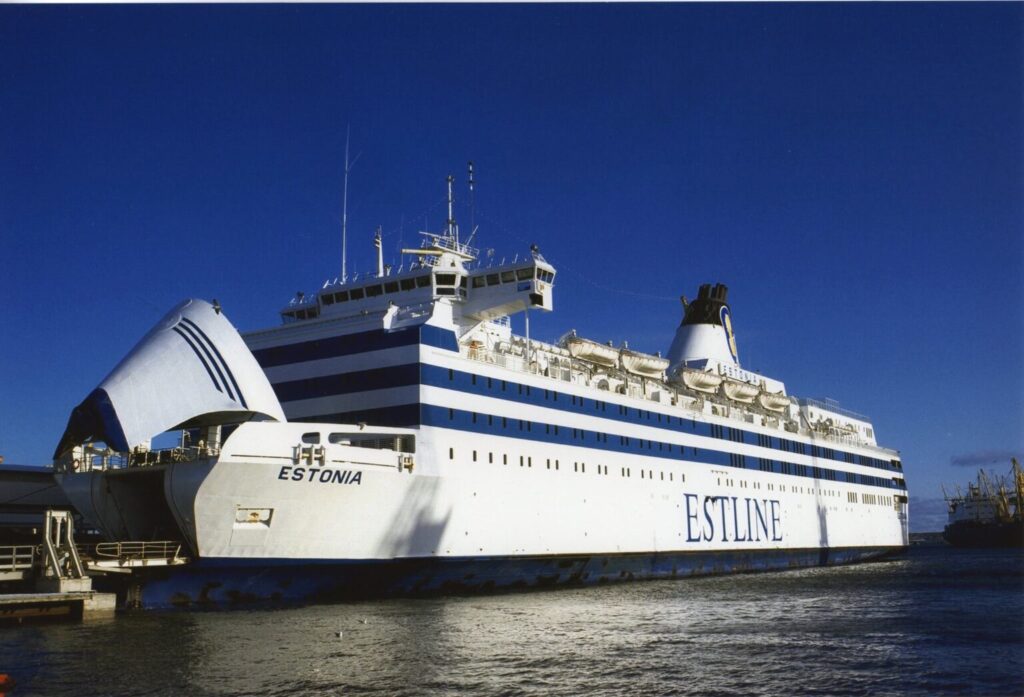

Yet, some people question this explanation, leading to various conspiracy theories involving Russian submarines, hidden cargo, explosives, and more.
Background
The MS Estonia was built in 1980 at the Meyer Werft shipyard in Papenburg. Germany. It was purchased by a Finnish shipping company named Rederi Ab Sally, which ordered a redesign of the ship, lengthening it by 509 feet.
The ship had 11 decks and a gross tonnage of 15,598 GT with four diesel engines, which gave her a maximum speed of 21.1 knots.
Originally named Viking Sally, the ship was delivered to Finland in June 1980 and put into service on July 5th that same year.
With a capacity of 2,000 passengers and 460 cars, it was the largest vessel on the route between Turku, Mariehamm, and Stockholm.
One of the main features of Viking Sally was a visor on the front bow that revealed the car ramp.
The rest of the ship was impressive too, as it was designed to provide the passengers with everything they might need during their journey. For instance, Viking Sally had a swimming pool, a shopping center, a movie theater, a casino, and a sauna.
While operating for the Viking Line, the ship experienced a few maintenance issues. She was grounded in the Åland Archipelago in May 1984 and underwent propeller repairs the following year.
Curiously, the ship was a crime scene in July 1986, when a businessman, Antti Eljaala, was killed by Reijo Hammar.
One year later, in July 1987, two West German tourists were attacked by an unknown assailant. One of the tourists was murdered, while the other survived. The case remains officially unsolved, but the investigators did arrest their prime suspect, who was later acquitted on all charges.
In January 1993, Viking Sally was sold to Estline, an Estonian shipping company, and was renamed MS Estonia to celebrate the country’s independence following the fall of the Soviet Union.
The ferry was purchased in hopes of establishing Estonia as one of the prime tourist destinations in the Baltic. MS Estonia operated between the capital, Tallinn, and Stockholm, Sweden.
The trip to Stockholm
On the evening of September 27th, 1994, MS Estonia left Tallinn at 7:15 PM, heading towards Stockholm, where she was expected to arrive around 9:00 AM the following morning. A total of 989 people were on board: 803 were passengers, and the remaining 186 were crew members.
Most crew members were Estonian, while the majority of passengers were Swedish.
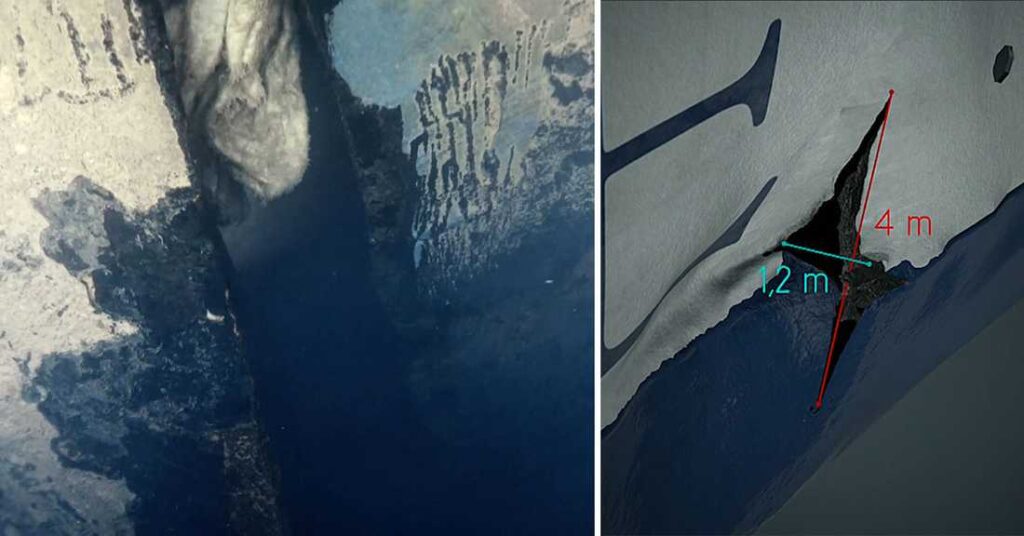
The cargo decks were fully loaded, and it was reported that the ship was listing starboard due to uneven weight distribution. Additionally, the crew failed to properly secure the vehicles on the car deck and car platform.
Before leaving for Stockholm, the crew received a warning about a storm in the Baltic Sea. However, such weather conditions were normal for that time of the year. MS Estonia has been sailing in this region for over a decade and has faced many similar storms.
The weather report stated that MS Estonia would encounter wave heights of 13 to 20 feet, along with strong winds ranging from 34 to 56 miles per hour. All the ferries scheduled for that night were at sea, with none remaining in port due to the storm.
The sinking
Around midnight, most passengers were in their cabins because of the bad weather. Some were experiencing seasickness as the MS Estonia braved the waves and wind.
Those who had decided to stay in the restaurant located on deck 6 remembered hearing banging somewhere inside the ship, but thought it was normal considering the conditions.
However, a loud metallic bang rang through the ship around 1:00 AM. It is believed that was the moment when a large wave hit the bow doors. At that time, MS Estonia was sailing away from the Turku archipelago.
The crew checked the indicator lights for the ramp and visor and confirmed everything was functioning normally. The loud bangs continued for the next 10 minutes.
At approximately 1:15 AM, the bow visor detached and opened the loading ramp, allowing water to flood the cargo decks. Everyone on board felt the quick starboard list, and then the ship made a sharp turn to port.
Five minutes later, a warning in Estonian echoed from the public address system, followed by the wailing of the ship’s general alarm.
As MS Estonia continued to tilt, the lower cabin windows came in contact with waves, and soon they were shattered. The water flooded into the passenger decks.
Passengers on the upper decks appeared confused about the situation, seemingly waiting for instructions from the crew, but no one came to assist them. Many retreated to their cabins in the ship’s interior.
Those who recognized the seriousness of the situation tried to reach the life rafts. It is estimated that up to 300 passengers managed to escape from the ferry.
By 1:20 AM, the ship was listing at an angle of around 50 degrees. At 1:22 AM, MS Estonia made contact with Silja Europa, failing to follow the international mayday format. The crew on the other ship had to confirm with MS Estonia that they were calling mayday.
The third mate of MS Estonia, Andres Tammes, took over the radio communication and provided details about what was happening. However, he was unable to give Silja Europa their precise location because by then, MS Estonia had lost power.
Minutes later, a crew member was able to reach the marine GPS, and MS Estonia sent the coordinates to Silja Europa and Mariella. Their last message was: “Really bad, it’s looking really bad right now.”
Around 1:50 AM, MS Estonia disappeared from radar screens, sinking in international waters, 22 nautical miles from Utö, a small island belonging to Finland.
The rescue
The survivors in life rafts were floating in the cold Baltic Sea, waiting for anyone to come and rescue them. Some of them saw approaching lights in the distance, and that gave them hope.
At 2:12 AM, Mariella was the first ferry to arrive at the scene of the accident. They rescued a raft with 13 survivors on it, and once a full-scale emergency was declared at 2:30 AM, Mariella reported the locations of other rafts to rescue helicopters.
Tragically, many survivors succumbed to hypothermia before they could be reached. Others were washed overboard while waiting for help. The sinking of MS Estonia resulted in a loss of 852 lives.
Only 137 survivors were rescued from the sea, most of whom were young males. There were no survivors under the age of 12. It is estimated that around 650 passengers were still inside the ship when it disappeared beneath the waves.
The investigation
Following the disaster, relatives of the deceased passengers believed that their remains would be recovered. Many called for the whole ship to be recovered in order to be properly examined by the investigators. The wreck was located at a depth of 245 to 280 feet, which meant that the recovery was possible.
However, the Swedish government opposed this idea, suggesting instead that the entire ship be buried under a concrete shell. The wreck was declared a sacred site and is monitored on radar by the Finnish Navy.
An official inquiry was launched by Sweden, Finland, and Estonia, which sent divers and remotely operated underwater vehicles to examine the wreckage. The bow visor was discovered near the ship, and it was the only piece of Estonia that was brought to the surface.
The official report stated that the strain of waves caused the failure of the locks on the bow visor. Once it was separated from the ship, the car ramp opened completely, allowing water to flood the car decks rapidly.
Interestingly, both the bow visor and the car ramp detached from the ship at points that didn’t trigger any alarms on the bridge. Therefore, the crew was unaware of what was happening in that part of the vessel.
It is believed that the first loud metallic bang heard on MS Estonia was the sound of the bow visor’s locks failing due to heavy seas.
The inquiry identified several mistakes made by the crew, such as failing to reduce the speed of the vessel once they heard the loud banging coming from the bow. Furthermore, they didn’t sound the alarm in time and failed to perform the evacuation procedures.
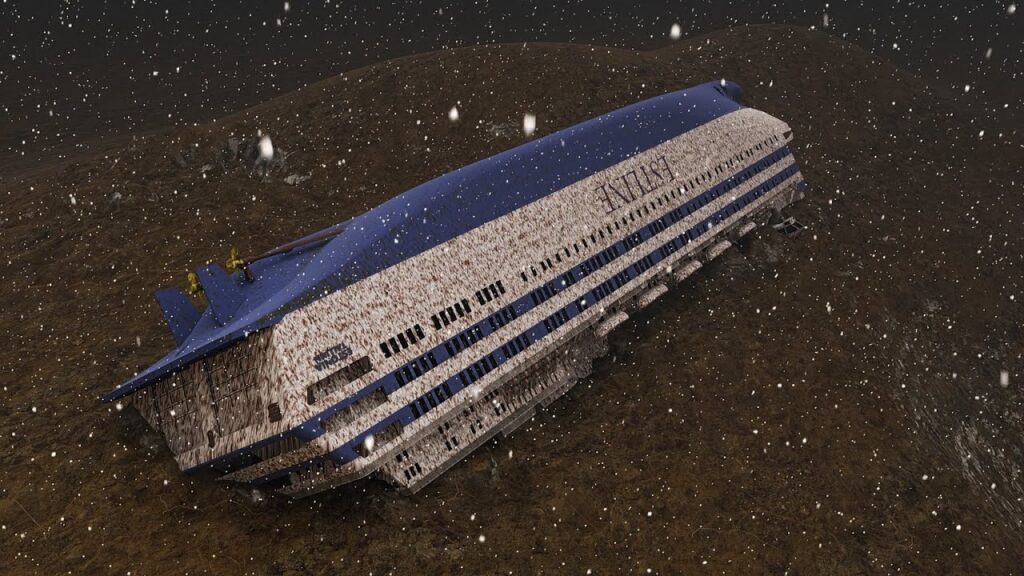
Many passengers were unaware of the severity of the situation, and others had no clear instructions on where to go in order to evacuate from the sinking ship.
Conspiracy theories
After the investigative team published their findings, various conspiracy theories began to emerge regarding the cause of the sinking of the MS Estonia. Since the entire ship went underwater in around 35 minutes, many suggested that someone had planted a bomb inside the cargo area.
In 2000, American businessman Gregg Bemis performed an unauthorized dive to the wreck of MS Estonia with his team. The divers reported seeing a large hole in the side of the ship, which contradicted the official findings that indicated water had entered through the bow area.
Bemis’ team recovered pieces of metal from the bow section that were scattered on the seabed. These fragments were sent for testing, and the results allegedly showed traces of explosive residue.
The investigative team denied these claims and even sent those samples to a different lab, which confirmed there were no traces of explosives. The bow visor had simply been sheared off by the force of the waves on the night of the disaster.
Following the news about the large hole on the side of the ship, conspiracy theorists presented an alternative explanation for MS Estonia’s rapid sinking, suggesting that the vessel had been rammed by a Russian submarine.
According to this theory, the collision created a hole beneath the waterline, flooding the decks underneath the cargo levels.
But why would a Russian submarine do this? There were claims that Soviet military equipment was being smuggled from Estonia to Sweden. It was alleged that when the Russians became aware of this, they acted to prevent the West from obtaining their sensitive equipment.
While later inquiries confirmed the presence of military vehicles on the ferry at least twice before the sinking, no such equipment was on board on September 27th, 1994.
In September 2020, two documentary makers performed another unauthorized dive, and their footage confirmed the existence of a large hole in the side of the ship.
They were both arrested, but their findings were significant enough to prompt Estonia, Finland, and Sweden to perform 3D scans of the wreck.
In January 2023, the Swedish Accident Investigation Authority stated that there is no evidence suggesting that MS Estonia collided with another vessel or a floating object.
There was no evidence of an explosion either. The report concluded that MS Estonia wasn’t seaworthy, and had proper inspections been performed in time, the vessel wouldn’t have been operational in September 1994.
Sources
https://estonianworld.com/security/the-sinking-of-ms-estonia-30-years-of-unanswered-questions/

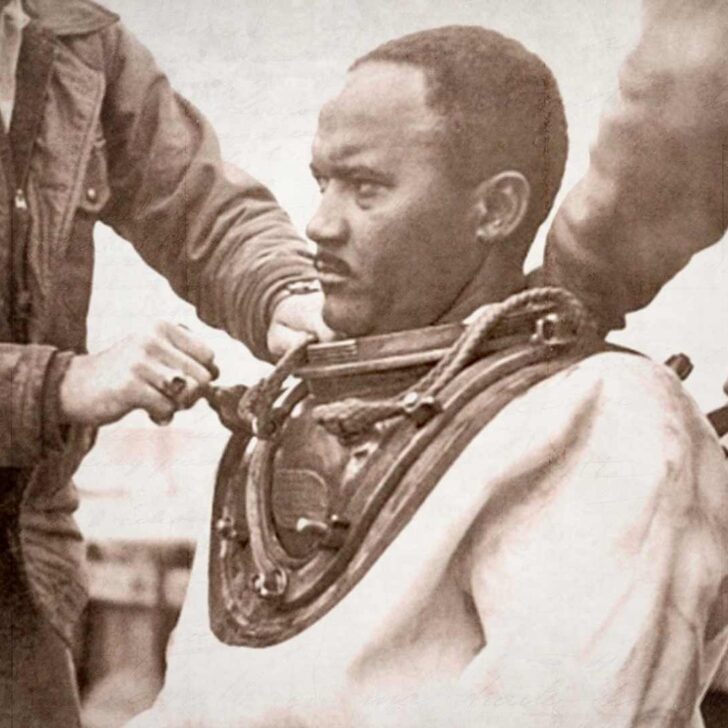

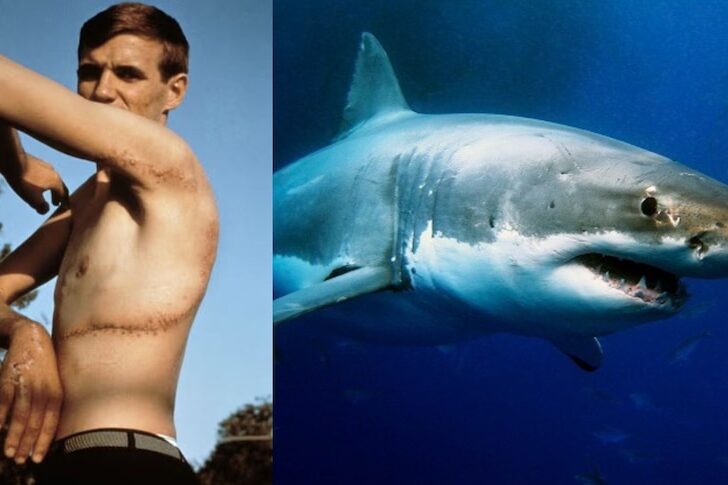








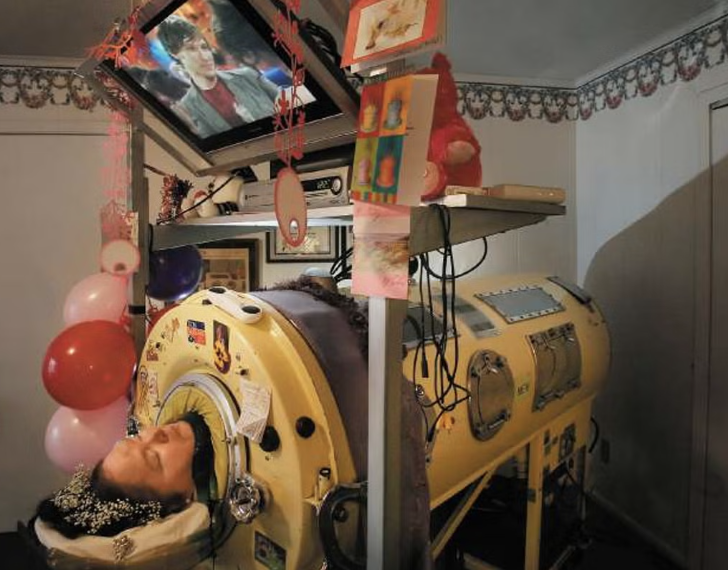
Leave a comment